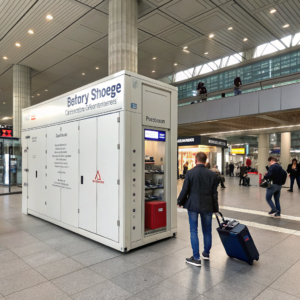# Improving Solar Panel Efficiency: Technological Advances and Challenges
•
Why do some solar panels generate more power than others despite receiving the same sunlight? The answer lies in cutting-edge efficiency technologies and the challenges of implementing them.
Solar panel efficiency improvements come from advanced materials like monocrystalline silicon and perovskites, innovative designs like bifacial panels, and optimized manufacturing - but cost remains a key adoption barrier.
The race for higher solar efficiency is transforming renewable energy, with laboratory cells now exceeding 47% efficiency. Yet bringing these breakthroughs to mainstream markets presents complex engineering and economic challenges worth examining.
Technologies for Improved Efficiency: High-Efficiency Monocrystalline and Perovskite Materials
Why settle for 15% efficiency when new materials promise to nearly double solar output? Advanced cell technologies are redefining what's possible in photovoltaic performance.
Monocrystalline PERC cells achieve 22-24% efficiency by adding a rear passivation layer, while perovskite tandem cells exceed 30% in labs by capturing more light spectrum.
The New Generation of High-Efficiency Solar Materials
-
Monocrystalline PERC Technology
- Rear surface passivation reduces electron recombination
- Bifacial capability increases energy yield by 10-25%
- Current market leader for premium residential installations
-
Perovskite Breakthroughs Characteristic Perovskite Advantage Efficiency Potential 30%+ in tandem cells Manufacturing Lower-temperature processing Flexibility Can be applied to curved surfaces -
Implementation Challenges
- PERC: 8-12% higher cost than standard mono
- Perovskite: Durability concerns (3,000 vs. 25,000 hours for silicon)
- Supply chain limitations for new materials
"Perovskite-silicon tandems will likely reach commercial viability by 2025, potentially adding 5-10% to system output without increasing footprint" - National Renewable Energy Lab
Bifacial Solar Panels: How Do They Increase Power Output?
What if solar panels could generate electricity from both sides? Bifacial technology turns this concept into reality with clever engineering and installation techniques.
Bifacial solar panels capture reflected sunlight on their rear side, boosting output by 10-30% when installed over reflective surfaces like white roofs or light-colored ground cover.
Maximizing Bifacial Performance
-
Optimal Installation Conditions
- 3-4 feet elevated mounting
- 30-35 degree tilt angles
- Light-colored surfaces (albedo >50%)
-
Performance Comparison Installation Type Energy Gain White roof 15-20% Gravel surface 8-12% Grass field 5-8% -
Economic Considerations
- 10-20% higher module cost
- Requires specialized racking (+15-25%)
- Best ROI in commercial/utility-scale projects
Best Applications: Solar carports, ground-mounted systems, and flat commercial roofs where reflection can be optimized.
Challenges Faced: Balancing Solar Efficiency and Cost
Why aren't ultra-efficient solar panels everywhere if the technology exists? The harsh economics of renewable energy create difficult trade-offs between performance and affordability.
While lab cells reach 47% efficiency, commercial panels average 15-22% due to manufacturing costs, with the sweet spot being technologies that add <$0.10/W for each 1% efficiency gain.
The Efficiency-Cost Equation
-
Technology Adoption Barriers
- High-purity silicon requirements
- Complex deposition processes
- Low manufacturing yields for new tech
-
Market Realities Efficiency Tier Cost Premium Typical Use 15-18% $0 Budget residential 19-22% +$0.15/W Premium residential 23%+ +$0.30/W Space-constrained -
Future Outlook
- Perovskite commercialization could disrupt pricing
- Building-integrated PV may justify higher costs
- Automation driving down manufacturing expenses
Key Insight: Most homeowners achieve better ROI with mid-efficiency panels (19-21%) rather than chasing maximum laboratory efficiencies.
Conclusion
Solar efficiency advancements continue pushing boundaries, but practical adoption requires balancing performance gains with real-world economics - making mid-efficiency bifacial and PERC technologies today's sweet spot.








